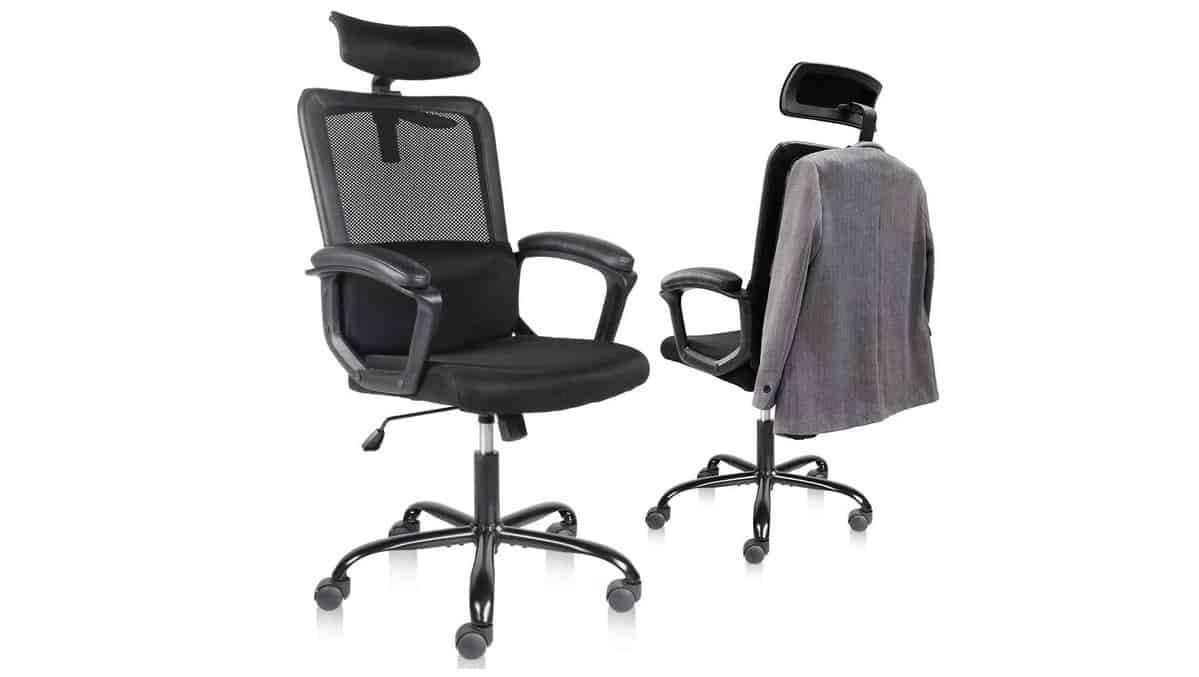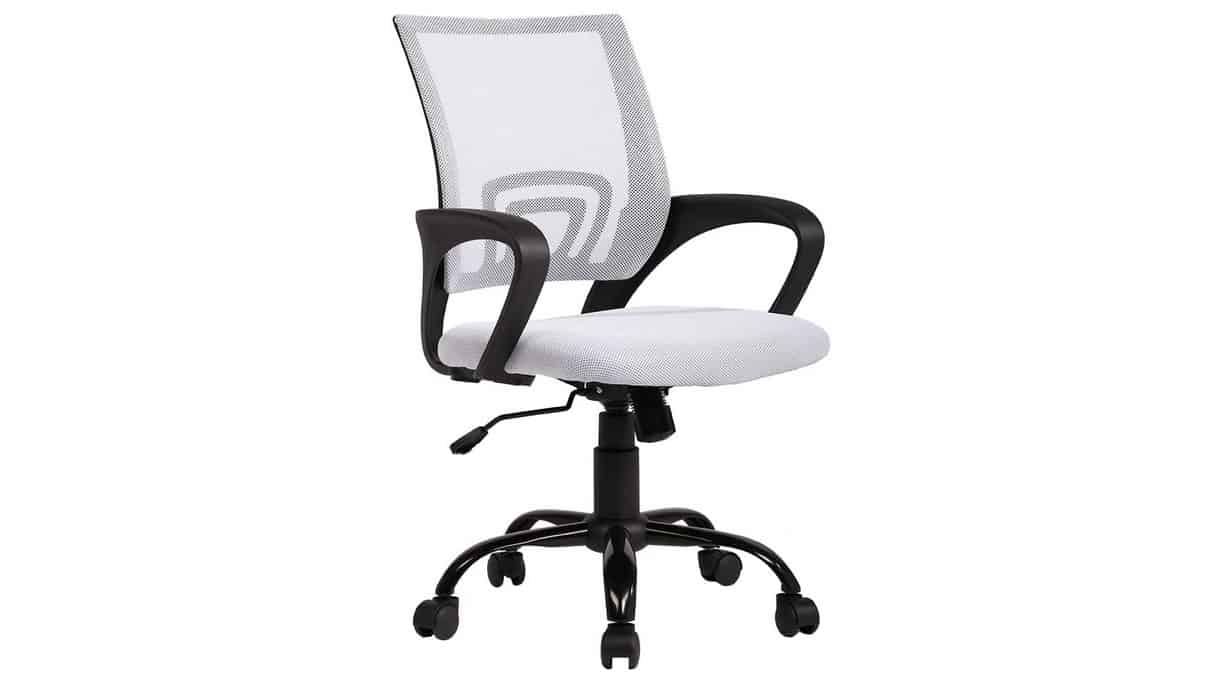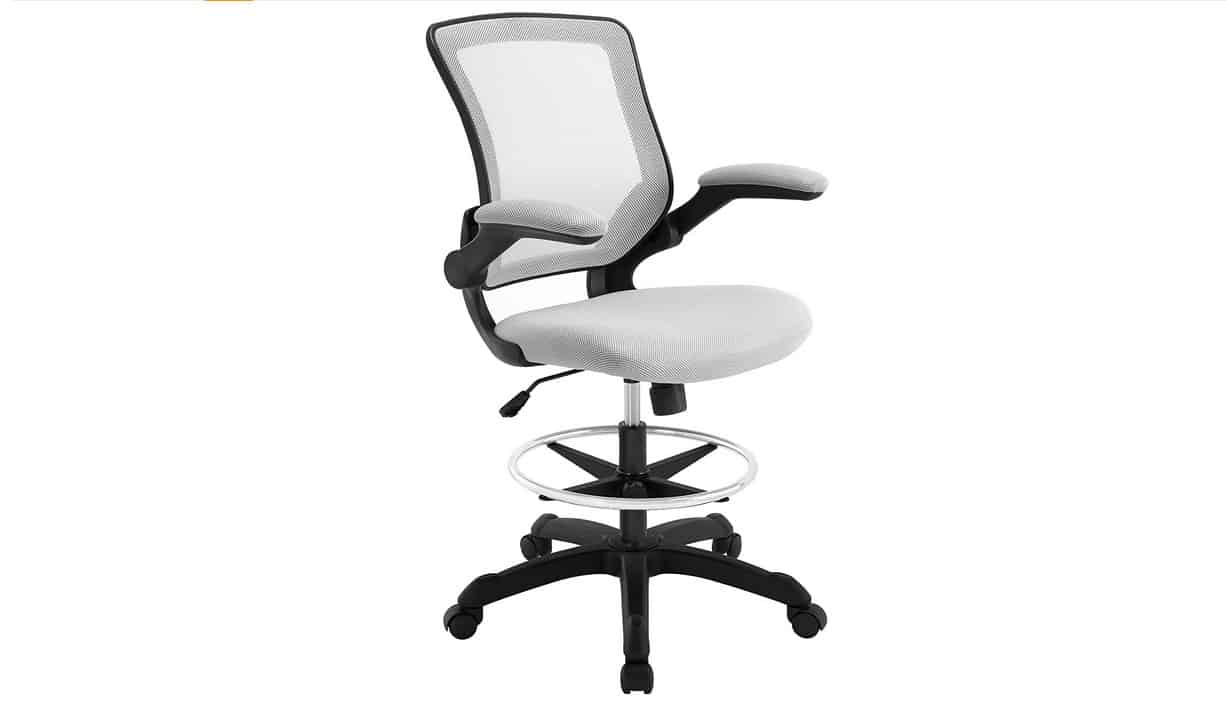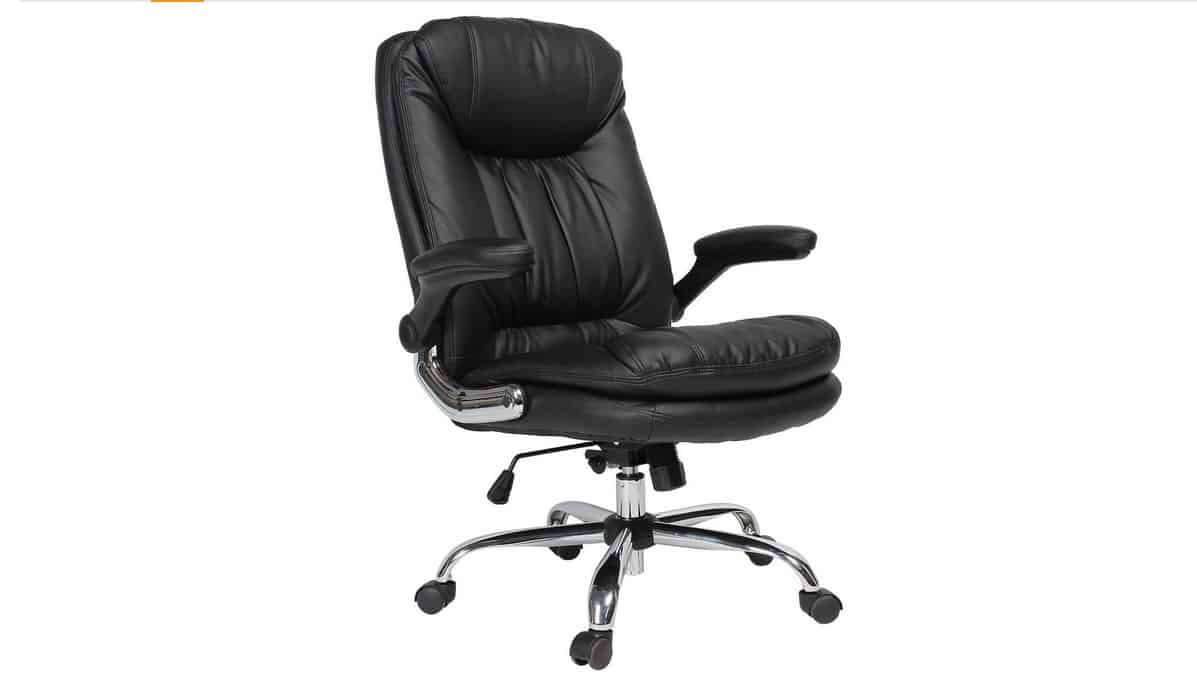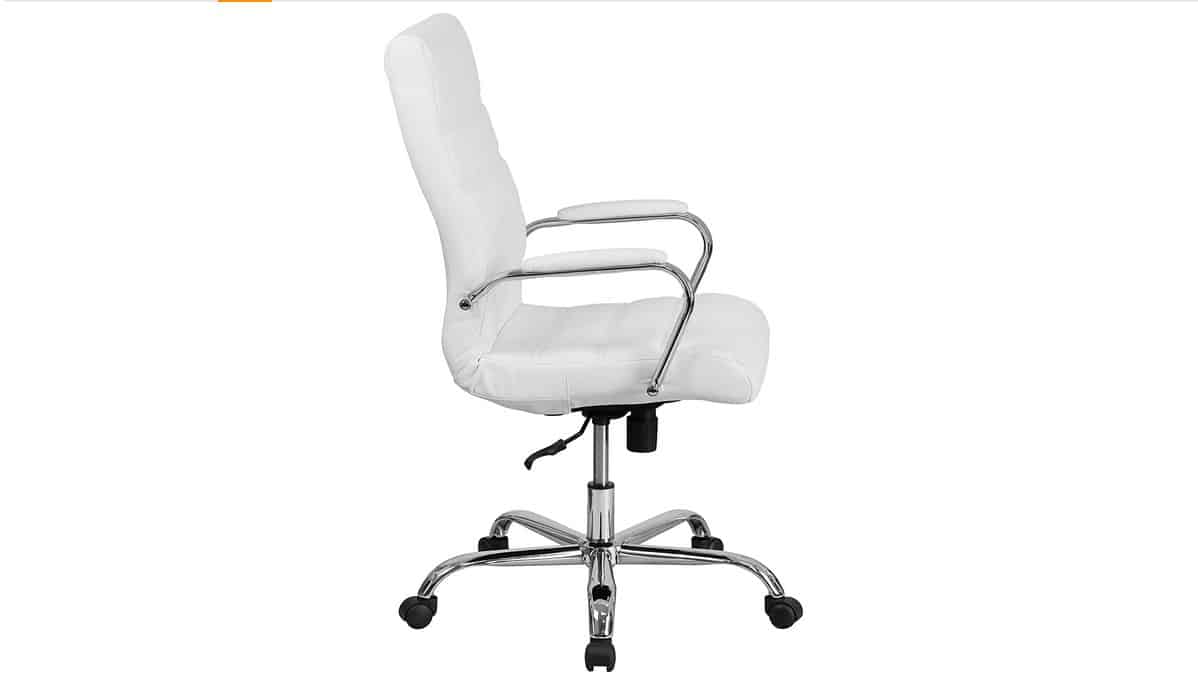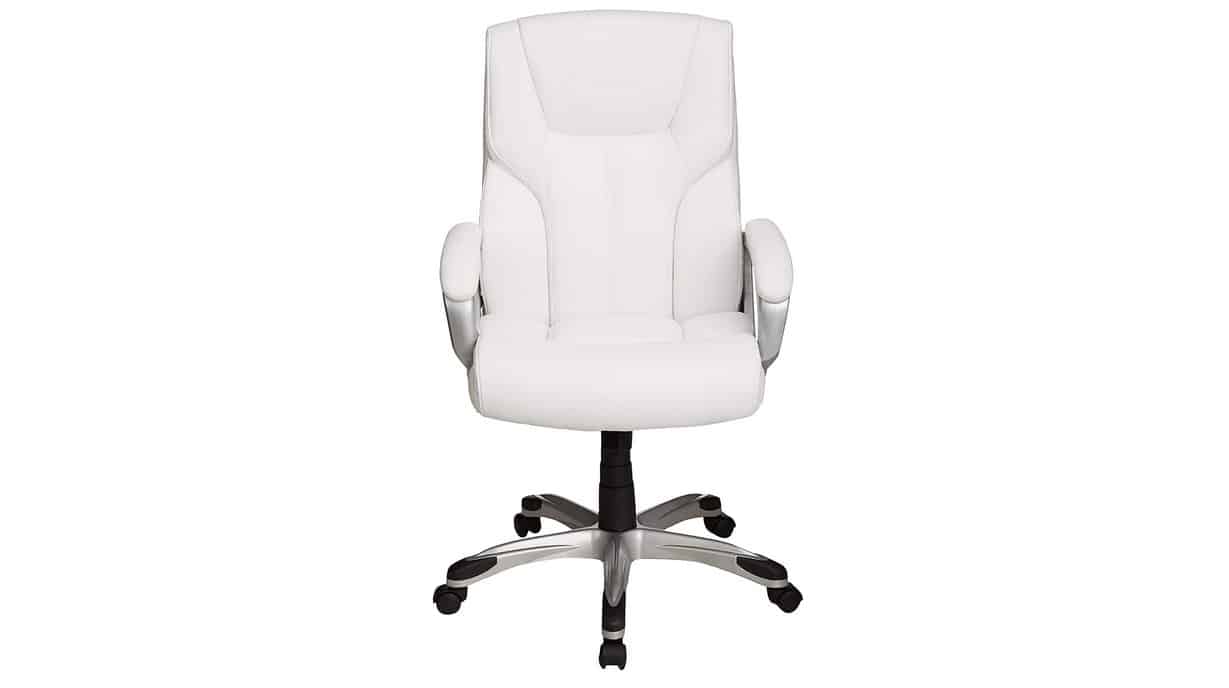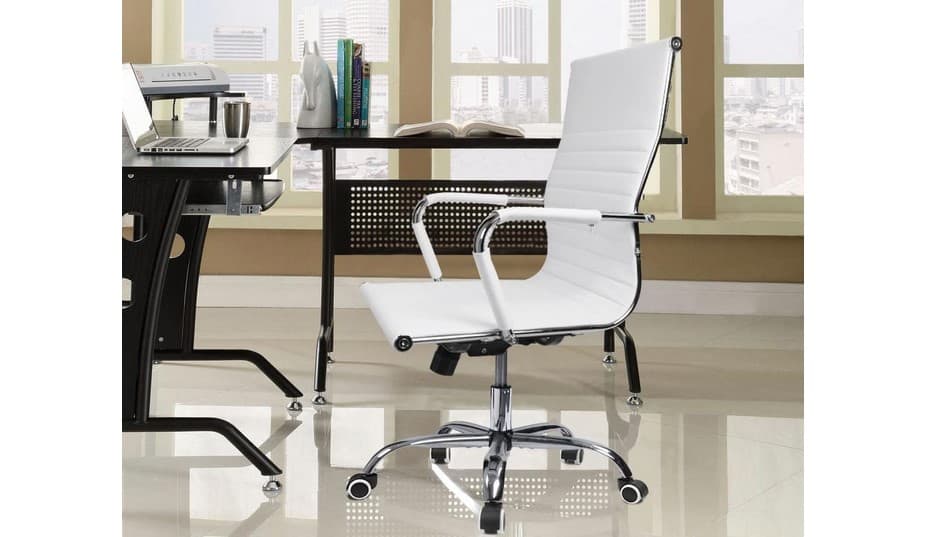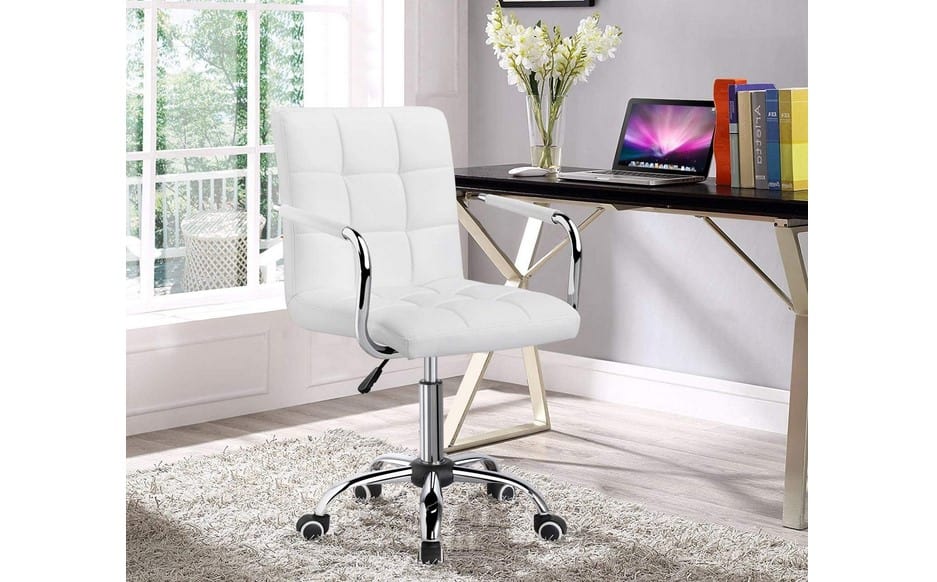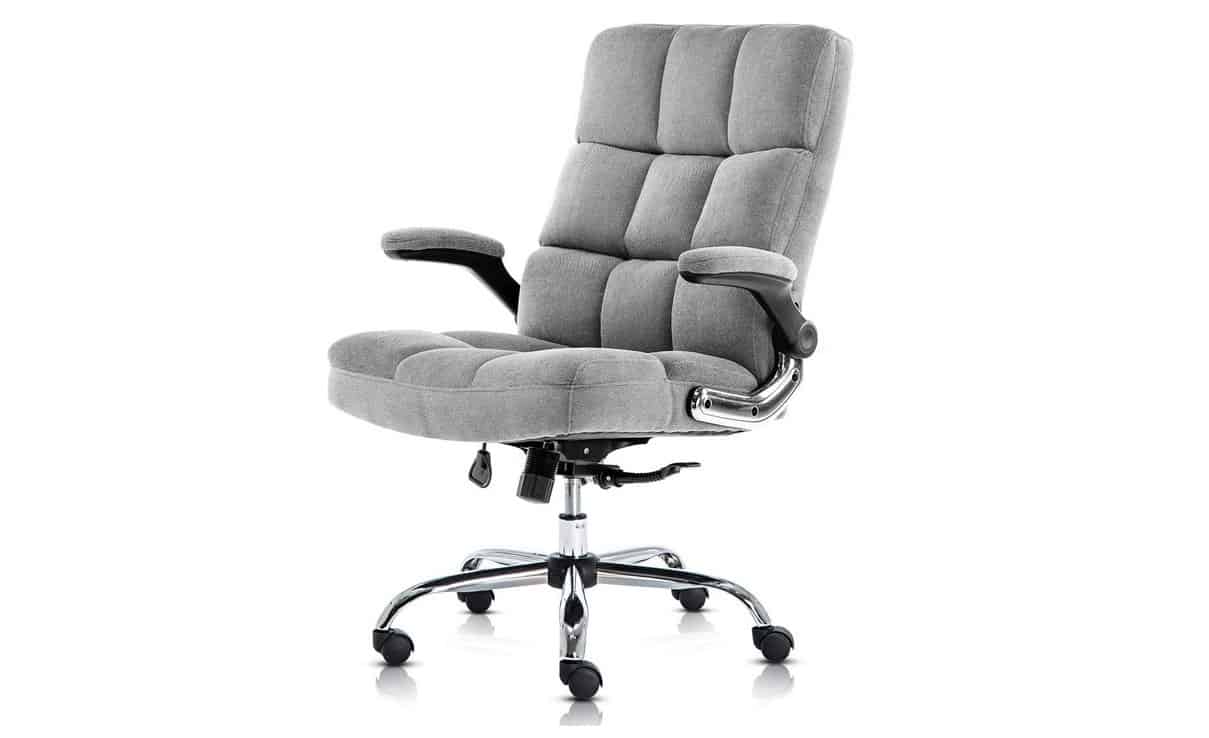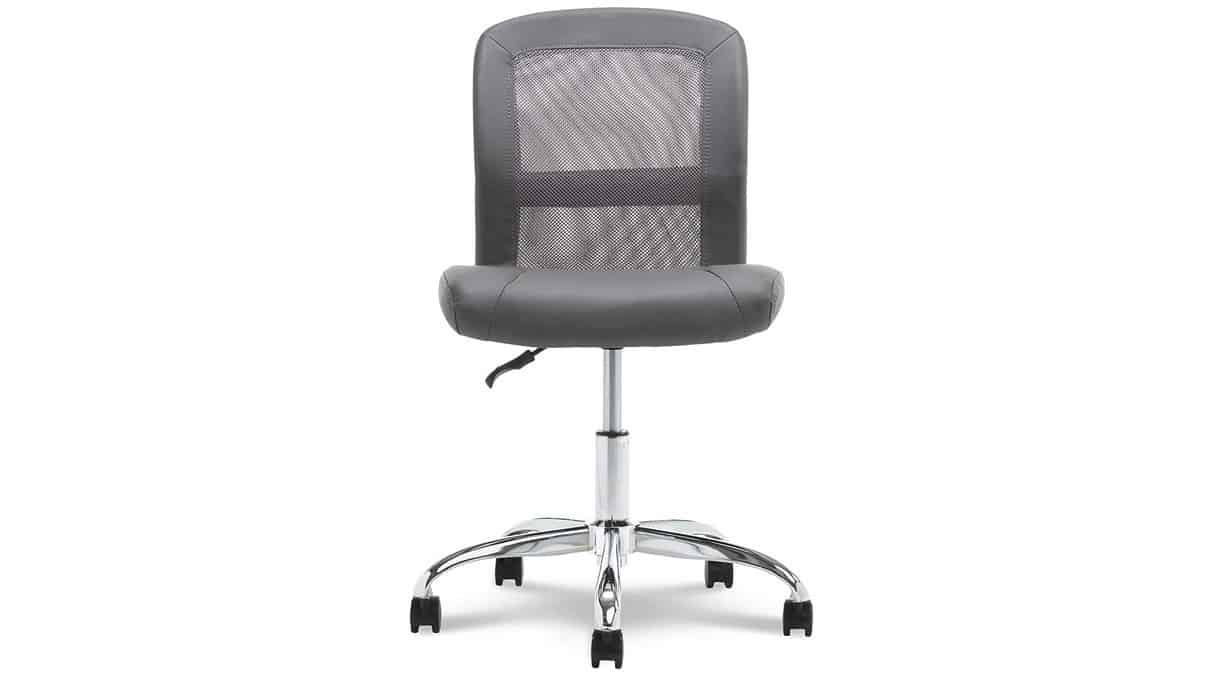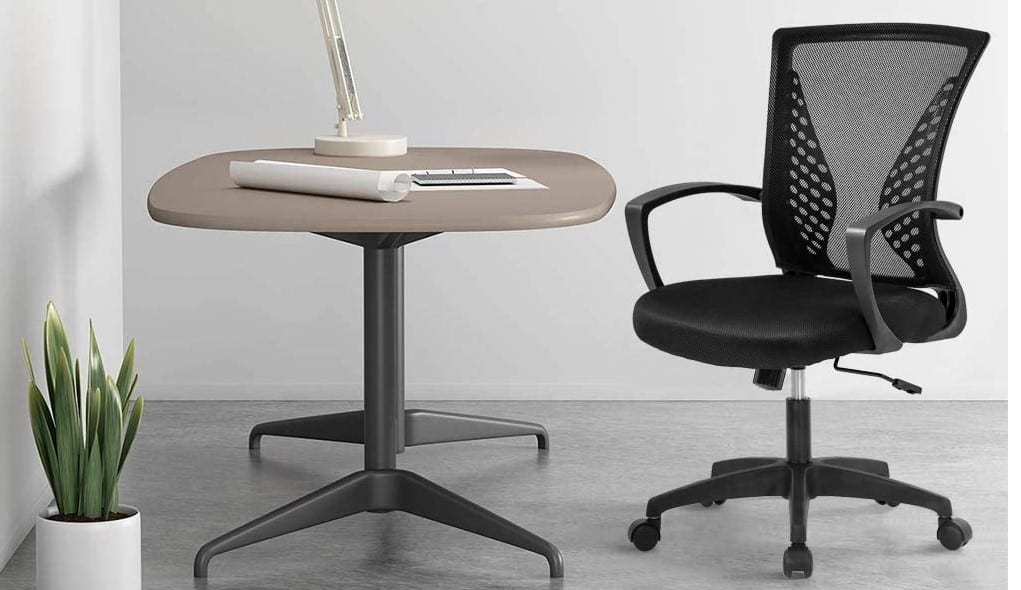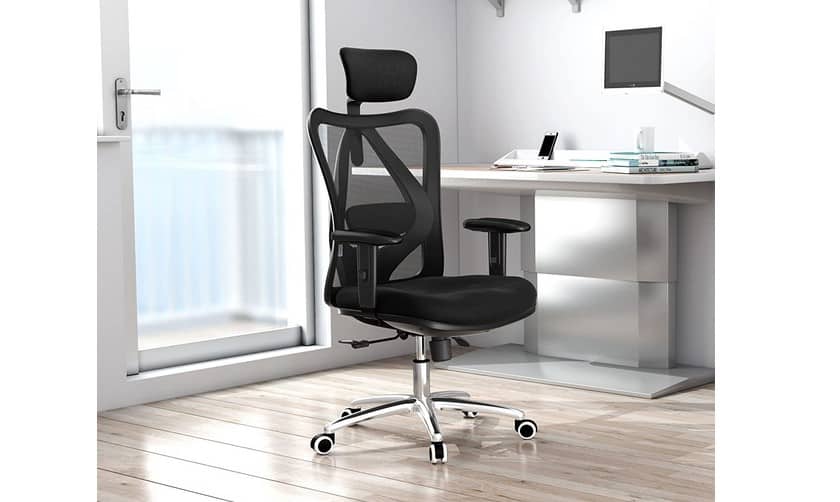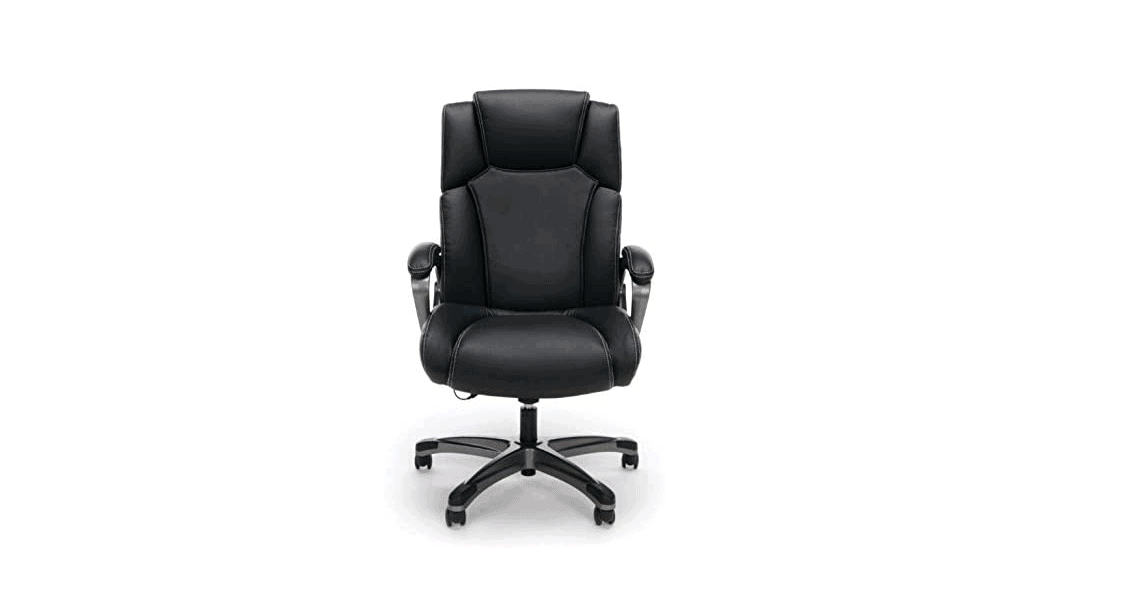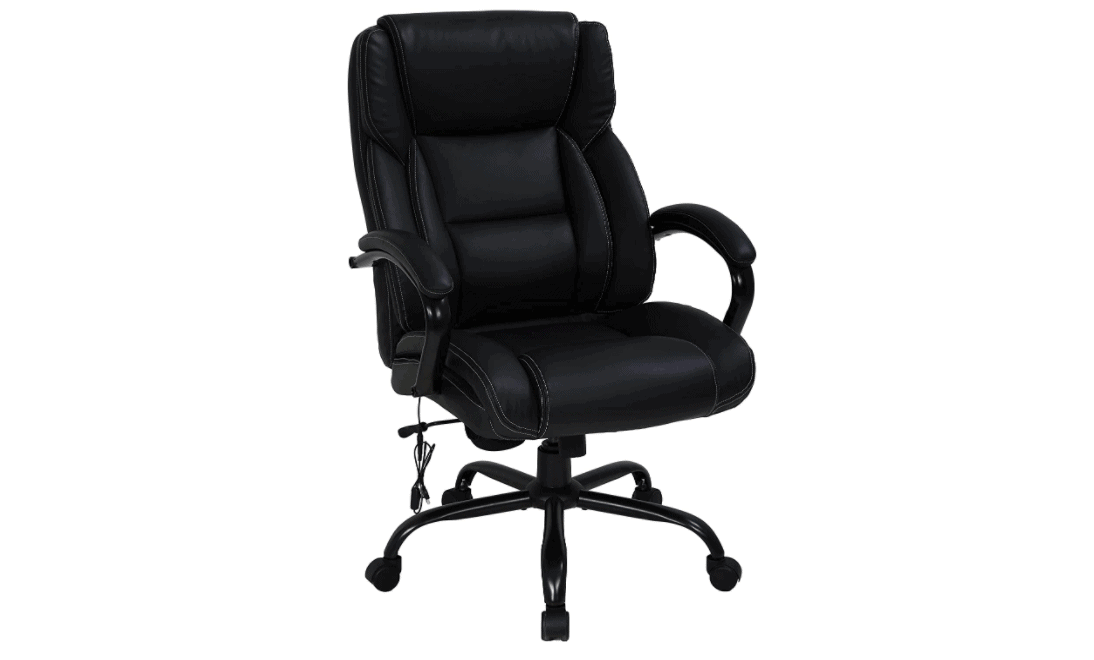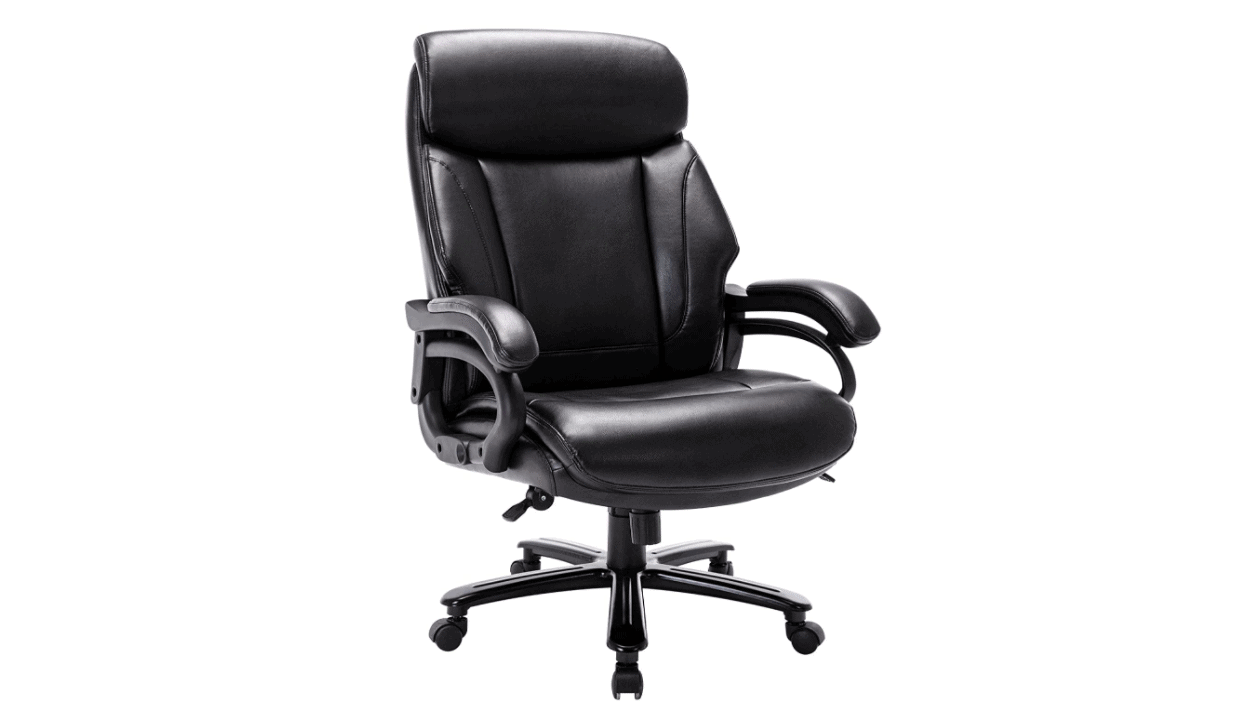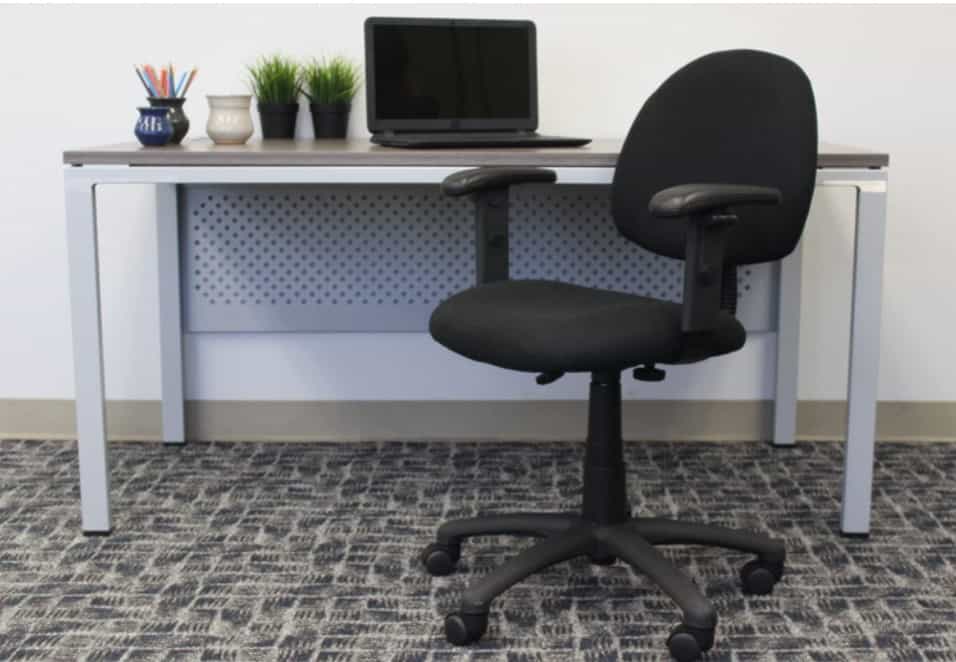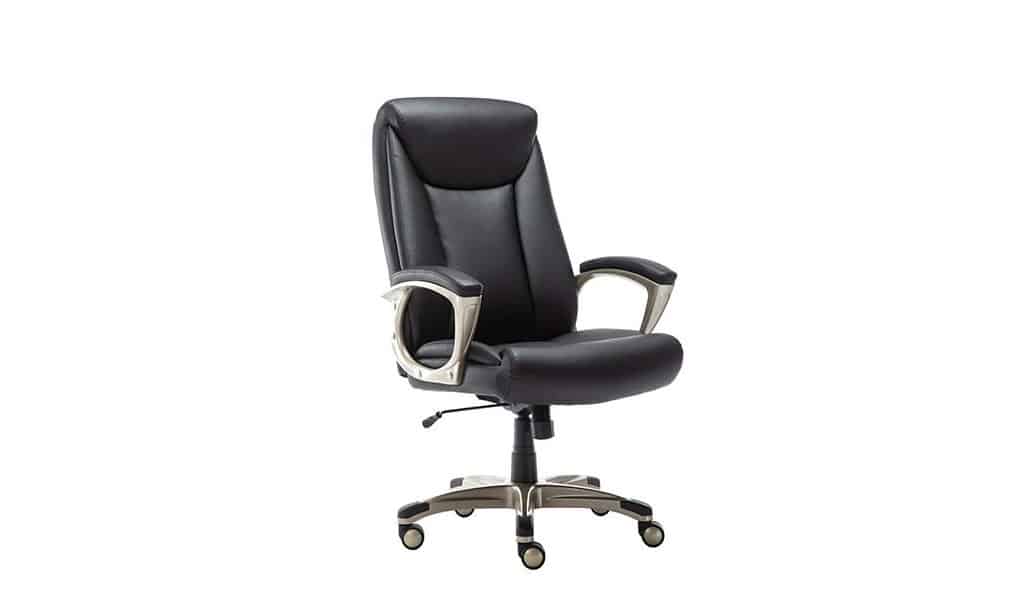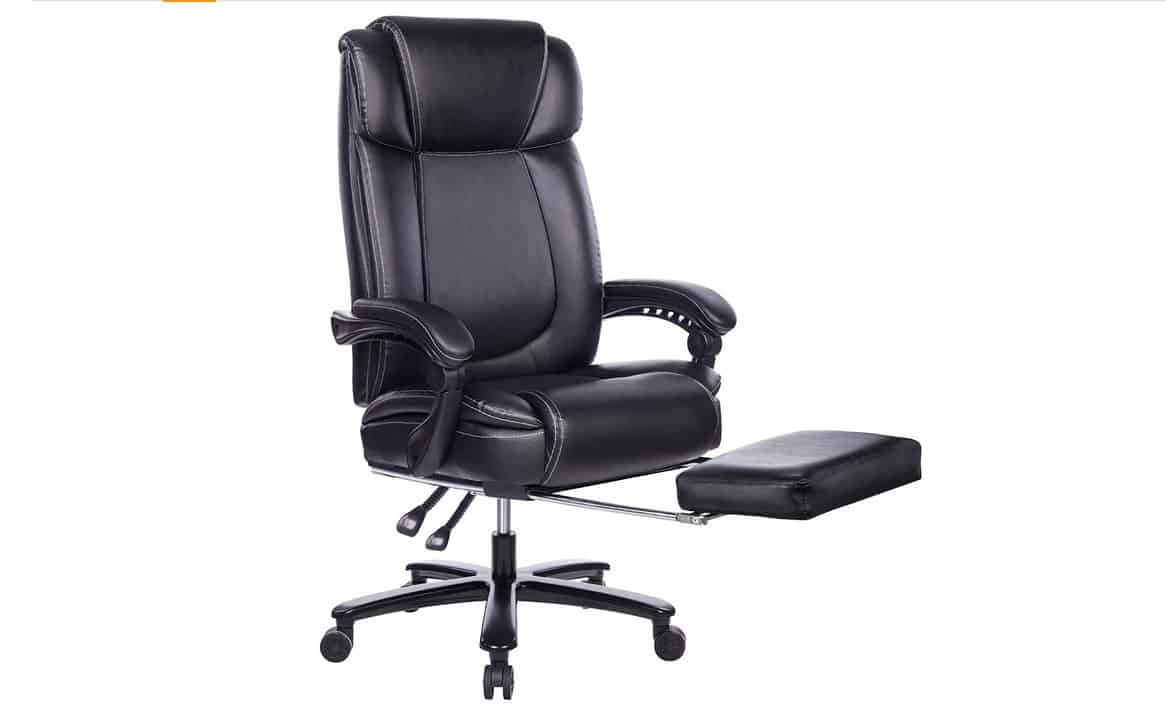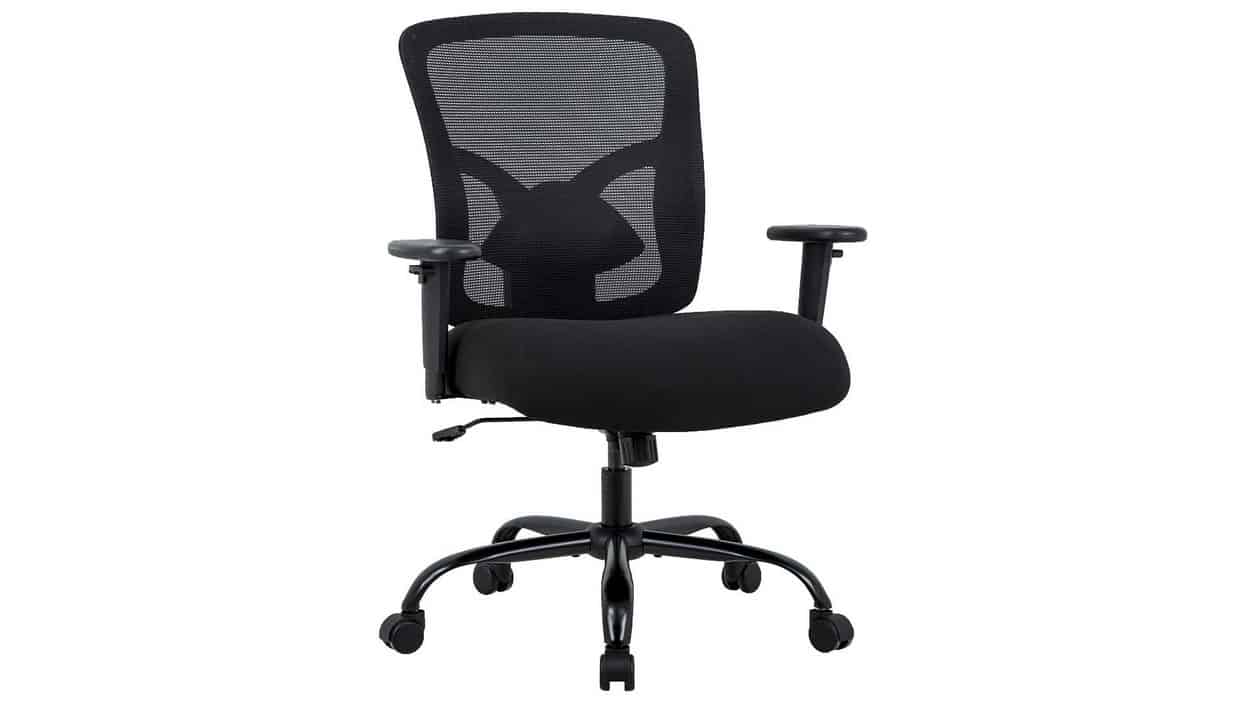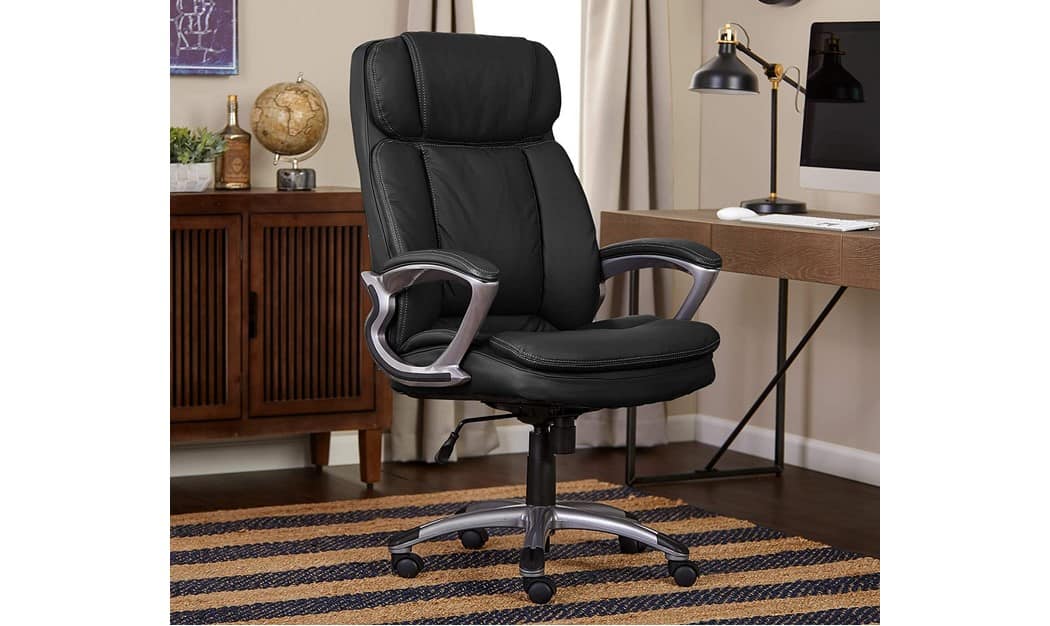Finding a great office chair that’s comfortable and supportive can feel a bit like trial and error. However, when you get it right, that office chair can be your new best friend. Along with key features such as proper lumbar support, and adjusting the height so that your feet are flat on the floor, learning how to properly adjust your office chair can also aid in ensuring that you’re comfortable when sitting for extended periods.
KEY TAKEAWAYS:
- Proper ergonomic support in an office chair is essential
- Adjustable seat height, armrests, and tilt/recline can help to reduce the load placed on your spine, hips, and shoulders.
- Your seat is properly adjusted when your feet are flat on the floor and the backrest supports the natural curve of your spine.
Why Adjusting Office Chairs is Important
Sitting in an ill-fitting chair is a recipe for disaster. Along with being physically uncomfortable, over time you can experience unnecessary strain and discomfort. In some cases, an office chair that doesn’t fit just right can be due to poor posture. But more often than not, people fail to take advantage of the built-in adjustments designed to customize a chair to your body. Poorly taking care of your chair like pouring liquids or not knowing how to clean hair off office chair wheels can also lead to problems.
Height Adjustment
Most office chairs are set on a wheelbase with casters. As a result, these types of chairs can offer anywhere from three to as much as 10 inches of height adjustment. You should adjust your chair so that your feet can rest comfortably when flat against the floor with your knees bent at a 90-degree angle.
For people with standing desks or standing desk attachments, consider the desk’s height range when it’s completely extended versus when retracted and find a chair with a compatible range.
Insider Tip
You should adjust your chair so that your feet can rest comfortably when flat against the floor with your knees bent at a 90-degree angle.
Don’t Forget Your Arms
Your arms should be able to rest in a neutral position that’s parallel with your desktop, with elbows bent at a 90 to 110-degree angle. However, it’s not uncommon to find that after adjusting for your arms, your feet may not comfortably touch the floor. In this scenario, opt for a chair with a footrest to get the support you need.
Related Posts:
Recline/Tilt Adjustments
While most ergonomic office chairs offer a recline/tilt or tension tilt adjustment, the angle range can vary widely. Taking advantage of this feature can help to reduce the overall load placed on your spine. To adjust the recline/tilt feature, most chairs support an in-use feature that allows you to lean back as far as you prefer and then lock the angle.
For tension recline options adjust the tension so that you can comfortably lean back with minimal force. Additionally, ensure that the chair doesn’t return to the 90-degree standard recline too quickly when you return to a forward sitting position. Whether your chair offers a recline or a tension tilt adjustment, experts recommend maintaining an angle of roughly 110 degrees for routine tasks like using your computer mouse or keyboard.
Adjustable Armrests
Not all chairs offer armrests, but those that do can be further categorized into adjustable or fixed. Avoid fixed armrests unless you already know the height of your desk and are confident that you can adjust the seat height so that the armrests don’t interfere with your arms’ position to the desktop. If you are facing this issue then you can learn how to replace arms on an office chair and get adjustable armrests.
If you have adjustable armrests on your chair, you should reposition them so that they’re sitting at elbow height. Additionally, when in your chair, your shoulders should be relaxed and your arms should be able to maintain a 90-degree angle at the elbows.
Fully Adjustable Armrests
Some armrests are designed so that you can widen or shorten the distance between them. This is ideal for people who are larger and need more interior seating space, or for individuals with varied tasks where the standard armrest placements might interfere with activities.
Optional Adjustments
While most office chairs provide seat height adjustment and a tilt recline function, some customizations are treated as a premium option and are usually found on more expensive chair models.
Insider Tip
Your arms should be able to rest in a neutral position that’s parallel with your desktop, with elbows bent at a 90 to 110-degree angle.
Seat Tilt Adjustment
Seat tilt is especially ideal for people who are not within the average height range. Adjusting this feature can technically give you more or less seat length depending on your needs. If your knees are in an angle that’s less than 90 degrees, move the seat back. Meanwhile, if your knees are over-extended, slide the seat forward.
Related Post:
Adjustable Lumbar Support
Lumbar support is a standard feature for office chairs. But wallet-friendly chairs tend to have fixed support while premium options allow you to adjust the depth and height. Adjust the height so that it supports the natural curve in your spine. Next, consider the pressure. If you feel too much tension in your back, adjust the dial so that it sticks out more. If there’s not enough support, increase the pressure until it feels comfortable.
Adjustable Headrests
Not all office chairs come with headrests, and those that do can further be divided into fixed and adjustable. For adjustable headrests, you usually have the option to raise or lower it, and sometimes to correct the angle.
First, adjust the height so that the headrest is set to support the base of your head. Your head should be fully supported in a neutral position and not feel like you’re being pushed forward or downward.
Warning
Avoid fixed armrests unless you already know the height of your desk and are confident that you can adjust the seat height so that the armrests don’t interfere with your arms’ position to the desktop.
F.A.Q.
How do I adjust my office chair?
Begin by adjusting the seat height so that your feet are flat on the ground and your arms are parallel with your desk’s surface. Also consider adjusting the seat depth, tilt/recline, or armrests if those features are available.
What does the knob on the bottom of an office chair do?
The knob is usually the tension adjustment feature. This allows you to increase or decrease the amount of force needed to recline or tilt in your chair.
What angle should my office chair be?
For most standard activities such as typing or using a mouse, your chair should be at a 100 to 110-degree angle.
STAT: Unlike desks that in North America have a standard height of 29”, there is no standard office chair height. Different office chairs have different ranges, though measured from floor to the seat, the typical range is from 16” to 22” (41cm to 56cm). (source)
REFERENCES:
- http://ergo.human.cornell.edu/DEA3250Flipbook/DEA3250notes/sitting.html
- http://ergonomictrends.com/standard-and-ideal-office-chair-height/
- https://www.spine-health.com/blog/9-ergonomic-tips-synchronizing-your-work-station-and-office-chairr
- https://www.spine-health.com/wellness/ergonomics/office-chair-choosing-right-ergonomic-office-chair
- https://www.wikihow.com/Choose-an-Ergonomic-Office-Chair















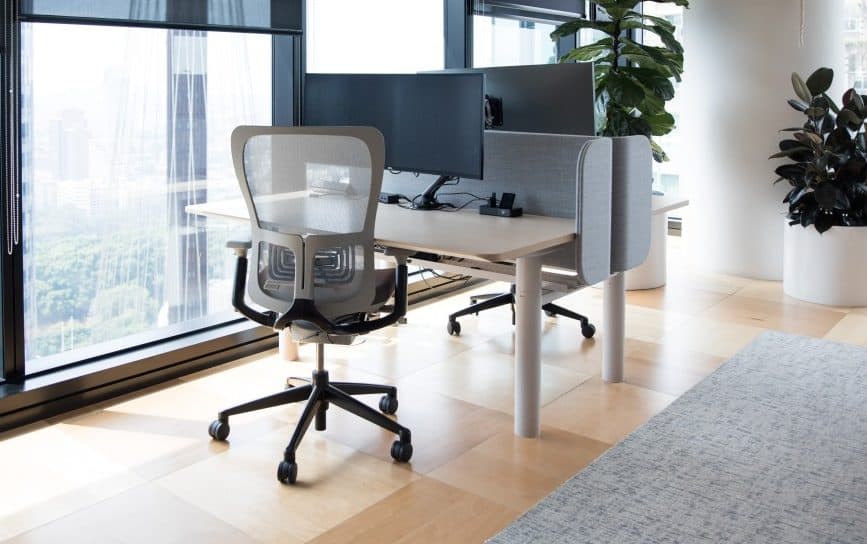
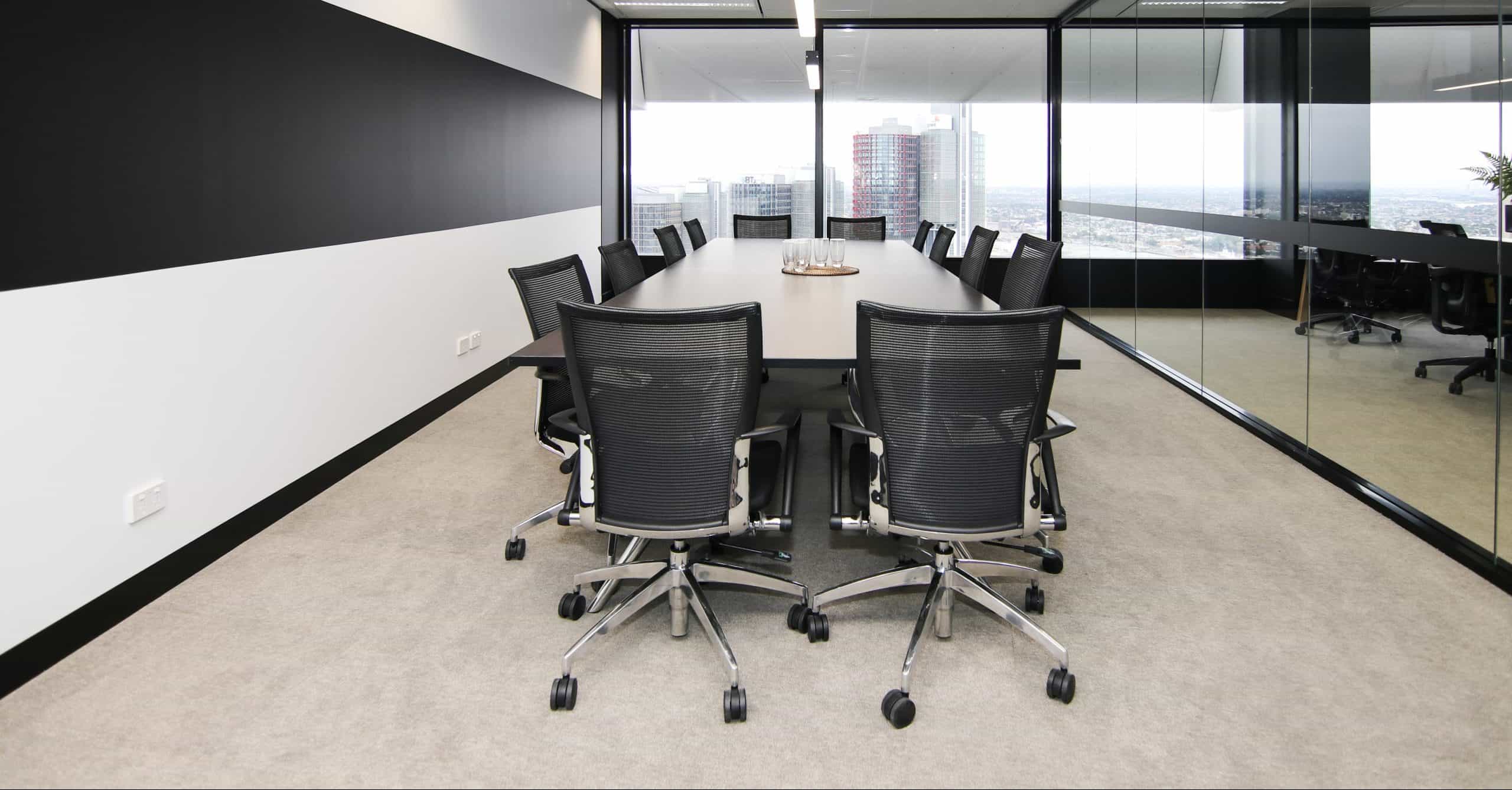
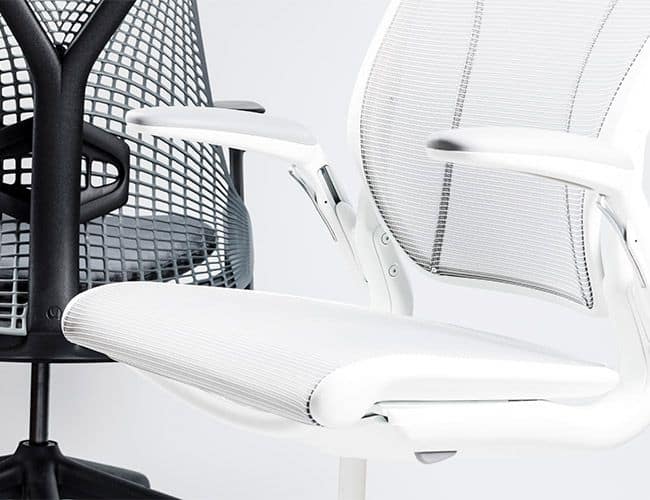
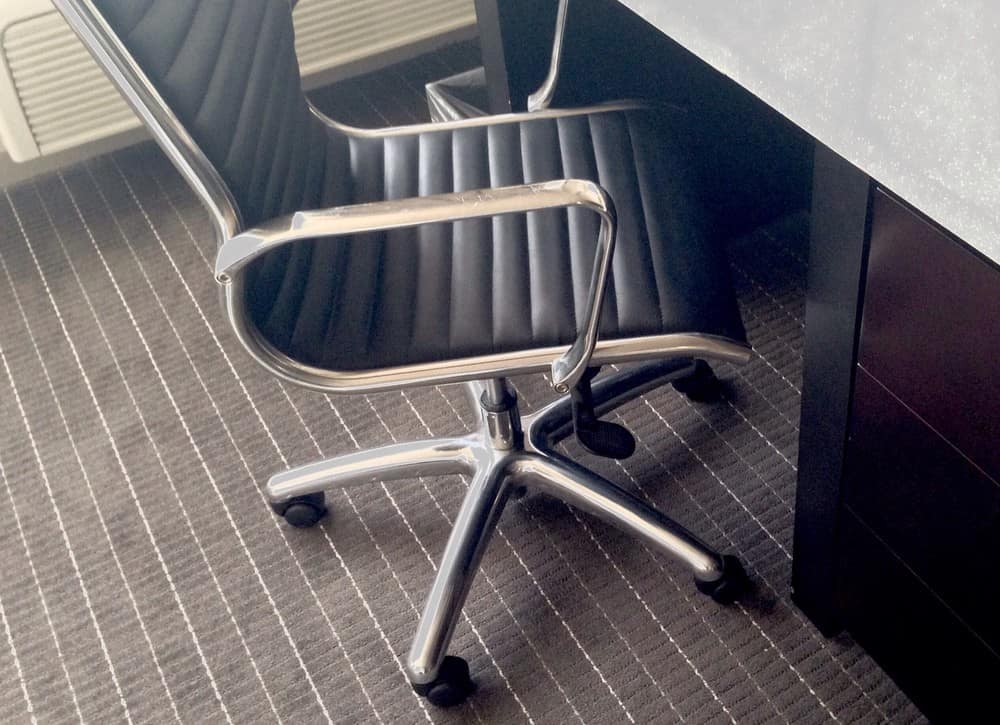

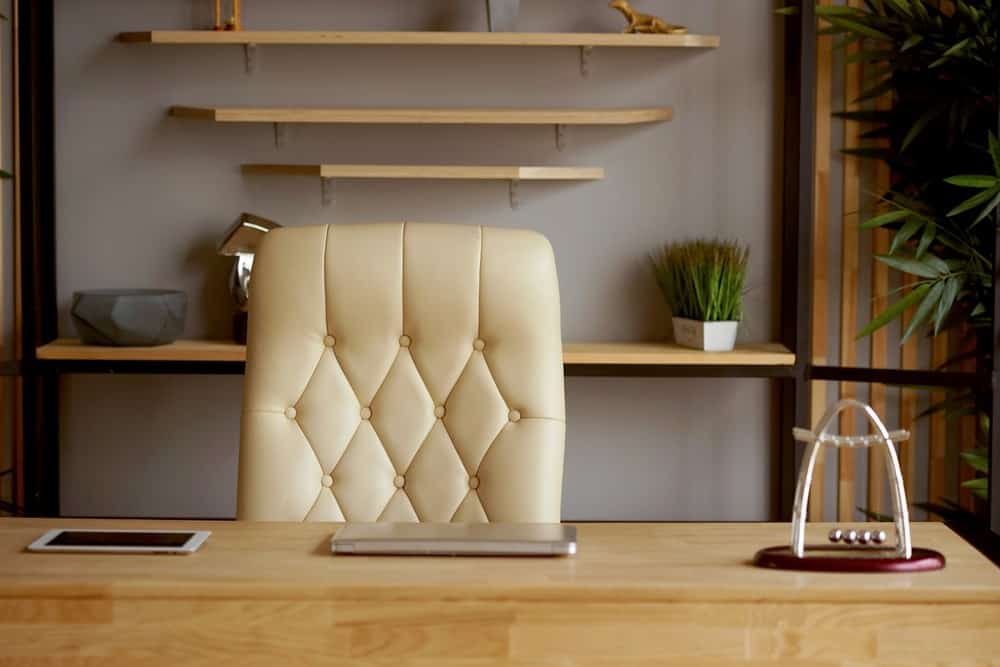
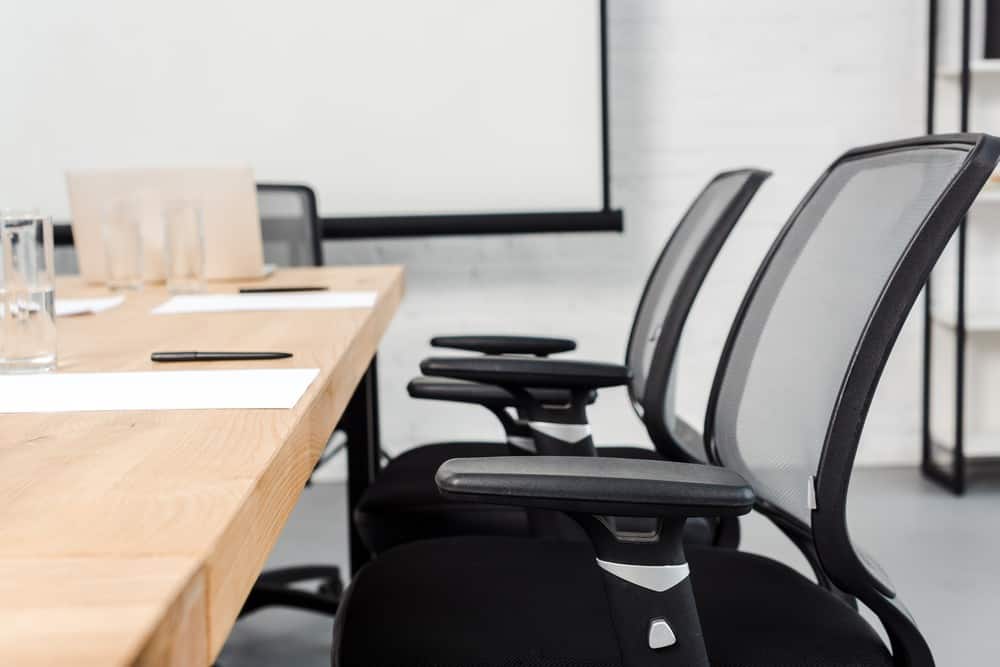


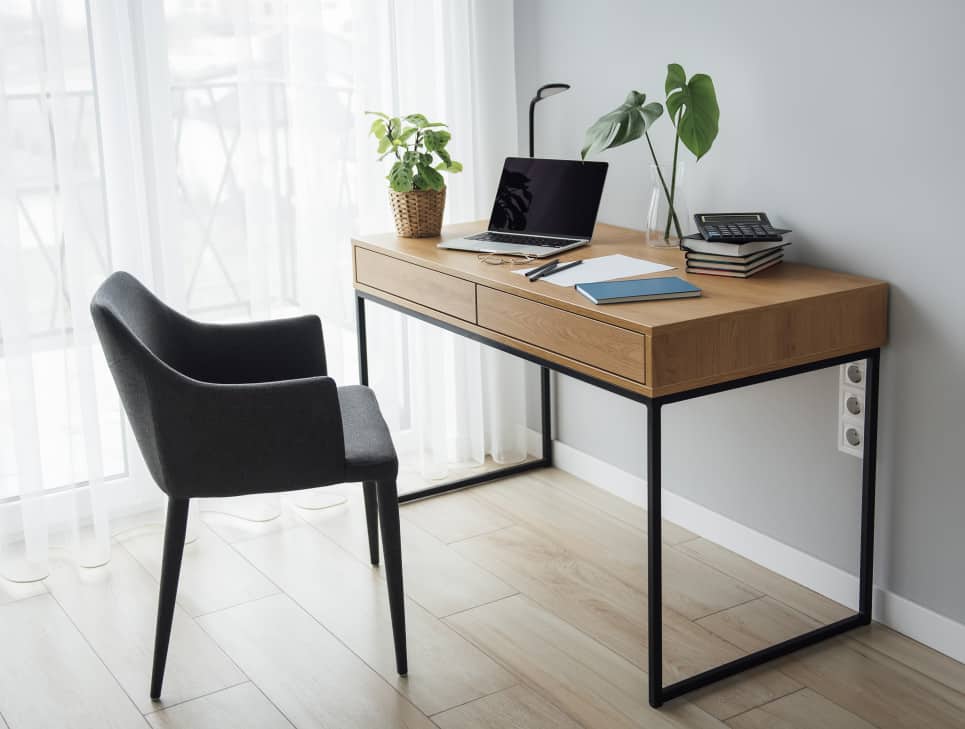



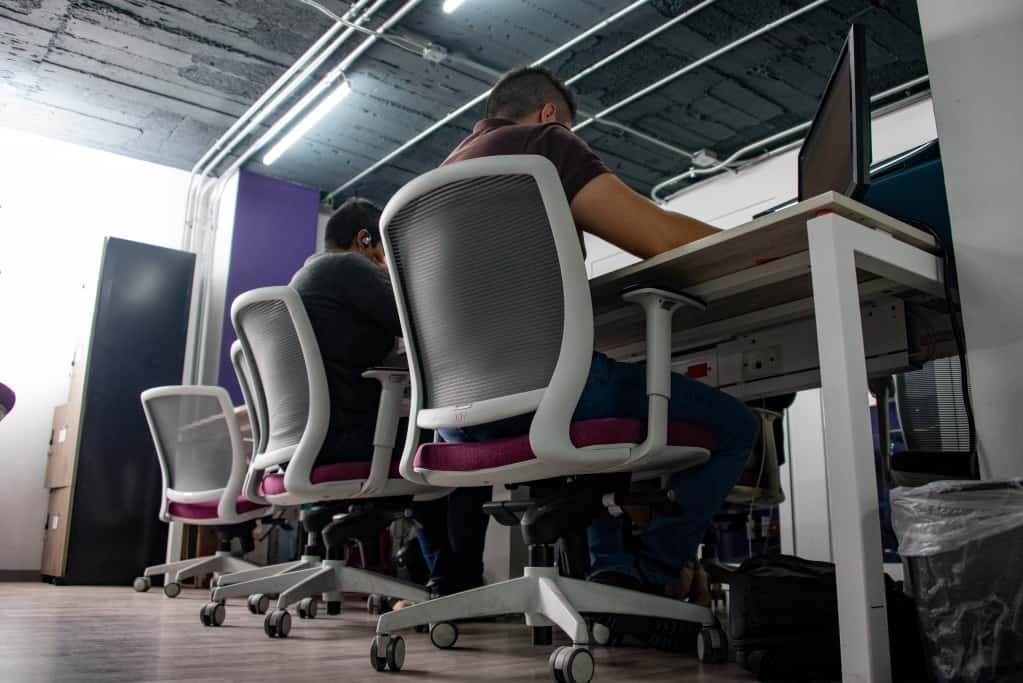
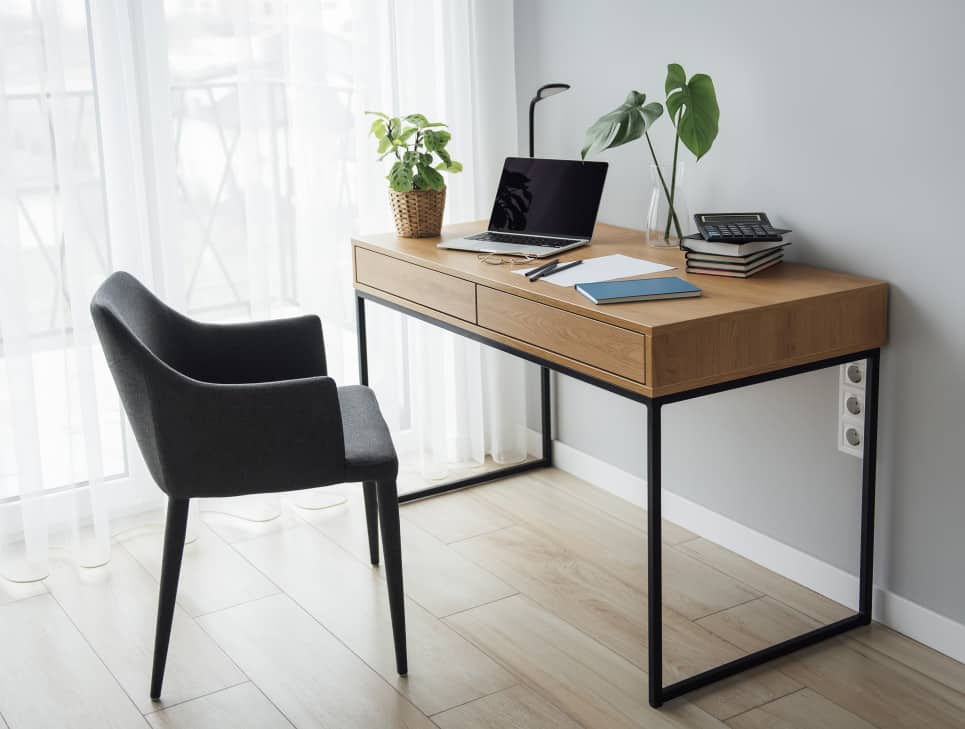

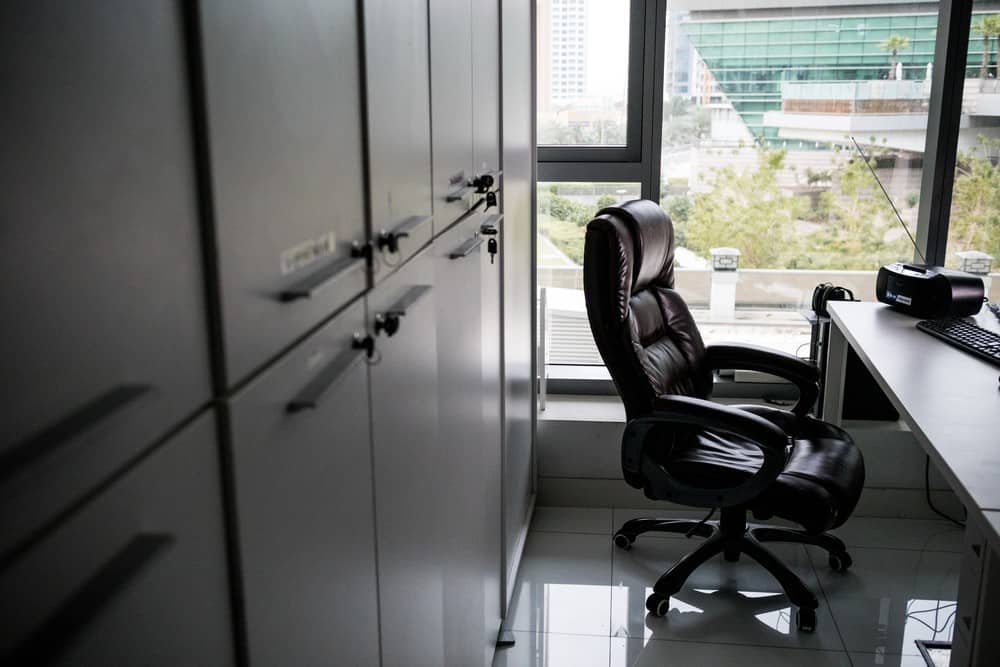
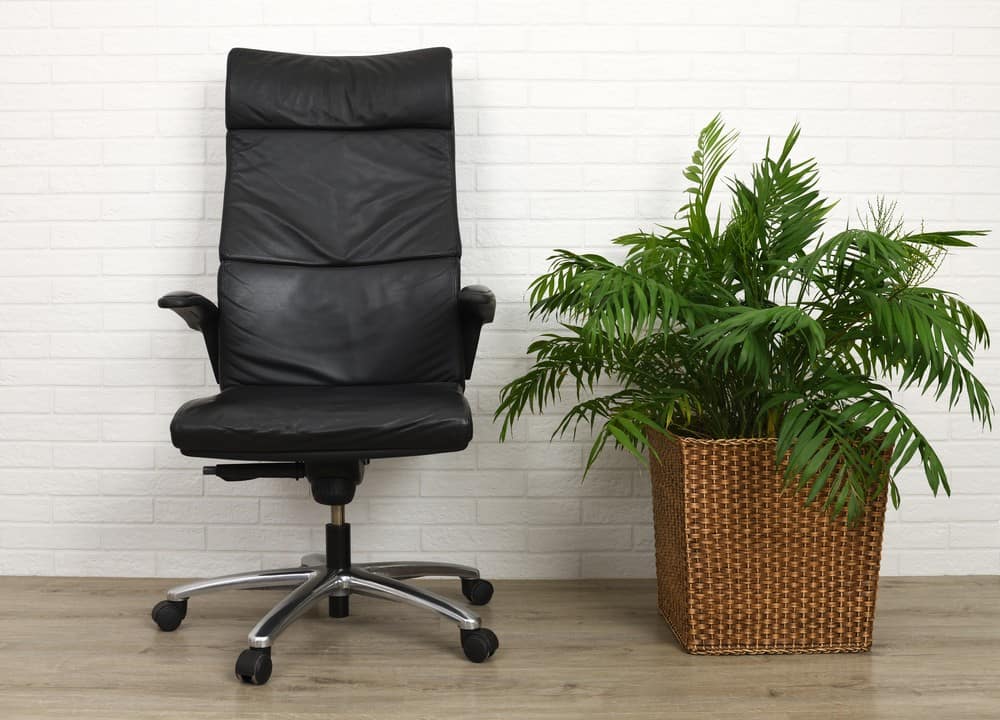

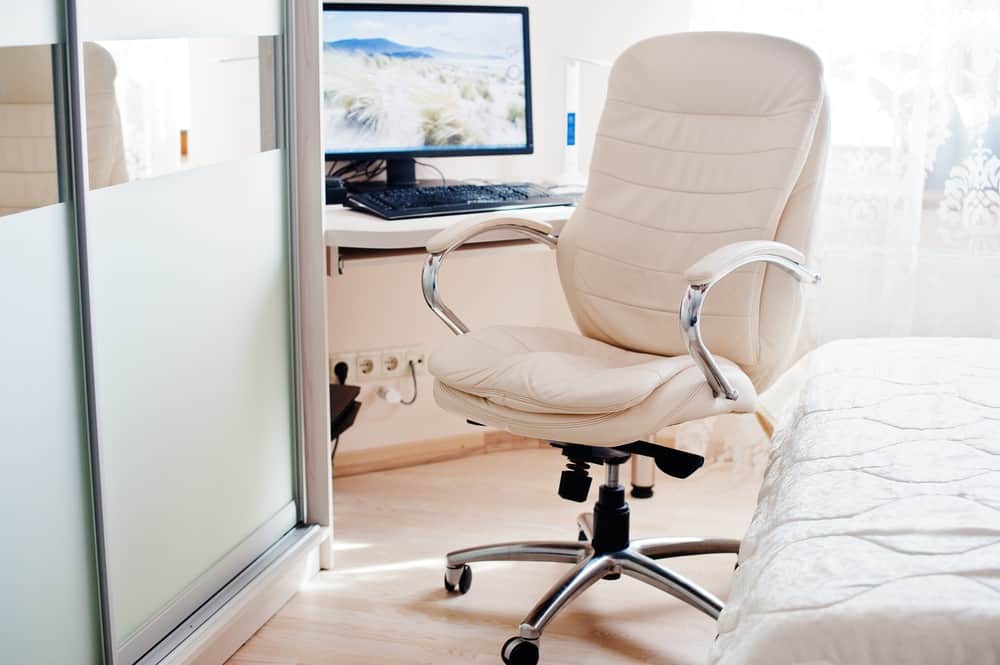
![Best Office Chair in [year] ([month] Reviews) 27 Best Office Chair in 2026 (January Reviews)](https://www.gadgetreview.dev/wp-content/uploads/best-office-chair-image.jpg)
![Best Office Chairs for Sciatica in [year] 28 Best Office Chairs for Sciatica in 2026](https://www.gadgetreview.dev/wp-content/uploads/best-office-chair-for-sciatica-image.jpg)
![Best Office Chairs for Hip Pain in [year] 29 Best Office Chairs for Hip Pain in 2026](https://www.gadgetreview.dev/wp-content/uploads/best-office-chair-for-hip-pain-image.jpg)
![Best Chairs for Programmers in [year] 30 Best Chairs for Programmers in 2026](https://www.gadgetreview.dev/wp-content/uploads/best-chair-for-programmers-image.jpg)
![Best Haworth Office Chairs in [year] 31 Best Haworth Office Chairs in 2026](https://www.gadgetreview.dev/wp-content/uploads/best-haworth-office-chairs-image.jpg)
![Best Wooden Office Chairs in [year] 32 Best Wooden Office Chairs in 2026](https://www.gadgetreview.dev/wp-content/uploads/best-wooden-office-chairs-image.jpg)
![Best Humanscale Office Chairs in [year] 33 Best Humanscale Office Chairs in 2026](https://www.gadgetreview.dev/wp-content/uploads/best-humanscale-office-chairs-image.jpg)
![Best Herman Miller Office Chairs in [year] 34 Best Herman Miller Office Chairs in 2026](https://www.gadgetreview.dev/wp-content/uploads/best-herman-miller-office-chairs-image.jpg)
![Best Steelcase Office Chairs in [year] 35 Best Steelcase Office Chairs in 2026](https://www.gadgetreview.dev/wp-content/uploads/best-steelcase-office-chairs-image.jpg)
![Best Leather Office Chairs in [year] 36 Best Leather Office Chairs in 2026](https://www.gadgetreview.dev/wp-content/uploads/best-leather-office-chairs-image.jpg)
![Best Fabric Office Chairs in [year] 37 Best Fabric Office Chairs in 2026](https://www.gadgetreview.dev/wp-content/uploads/best-fabric-office-chairs-image.jpg)
![Best Hon Office Chairs in [year] 38 Best Hon Office Chairs in 2026](https://www.gadgetreview.dev/wp-content/uploads/best-hon-office-chairs.jpg)

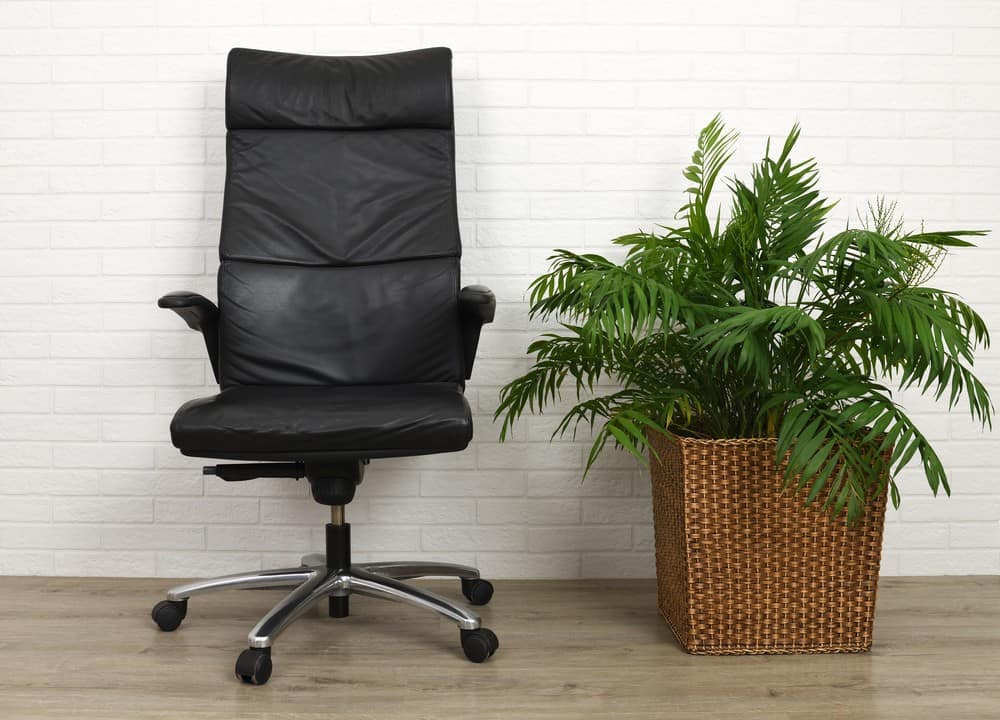
![10 Best Mesh Office Chairs in [year] 41 10 Best Mesh Office Chairs in 2026](https://www.gadgetreview.dev/wp-content/uploads/Best-Mesh-Office-Chair.jpg)
![10 Best High Back Office Chairs in [year] 42 10 Best High Back Office Chairs in 2026](https://www.gadgetreview.dev/wp-content/uploads/Best-High-Back-Office-Chair.jpg)
![10 Best White Office Chairs in [year] 43 10 Best White Office Chairs in 2026](https://www.gadgetreview.dev/wp-content/uploads/Best-White-Office-Chair.jpg)
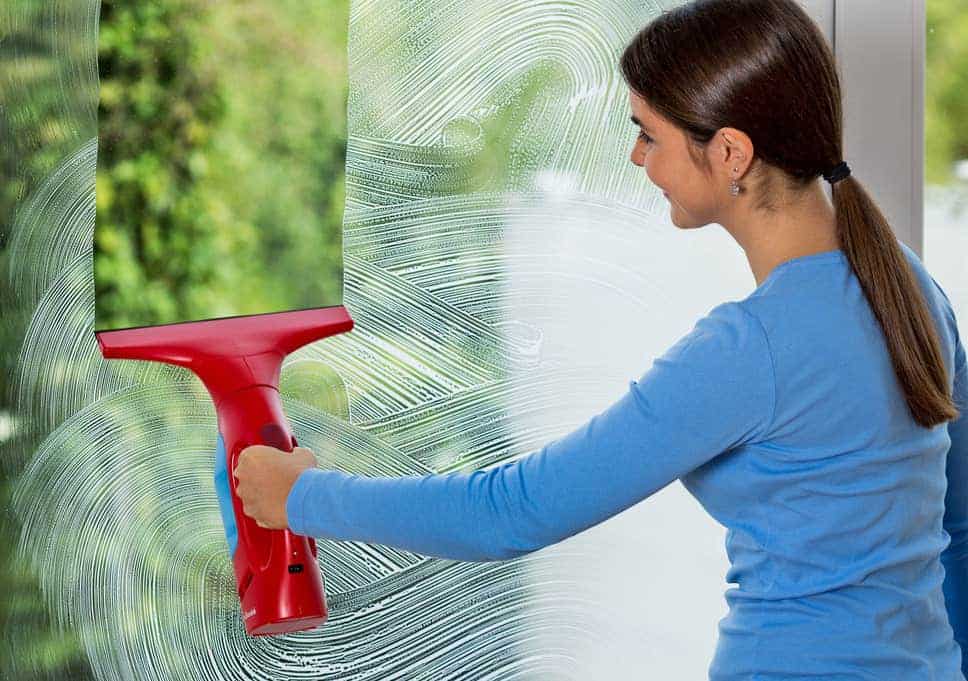
![Best Office Chair Under $300 in [year] ([month] Reviews) 45 Best Office Chair Under $300 in 2026 (January Reviews)](https://www.gadgetreview.dev/wp-content/uploads/chair-lower-back-pain.jpg)
![10 Best Drafting Chairs in [year] 46 10 Best Drafting Chairs in 2026](https://www.gadgetreview.dev/wp-content/uploads/best-drafting-chair.jpg)
